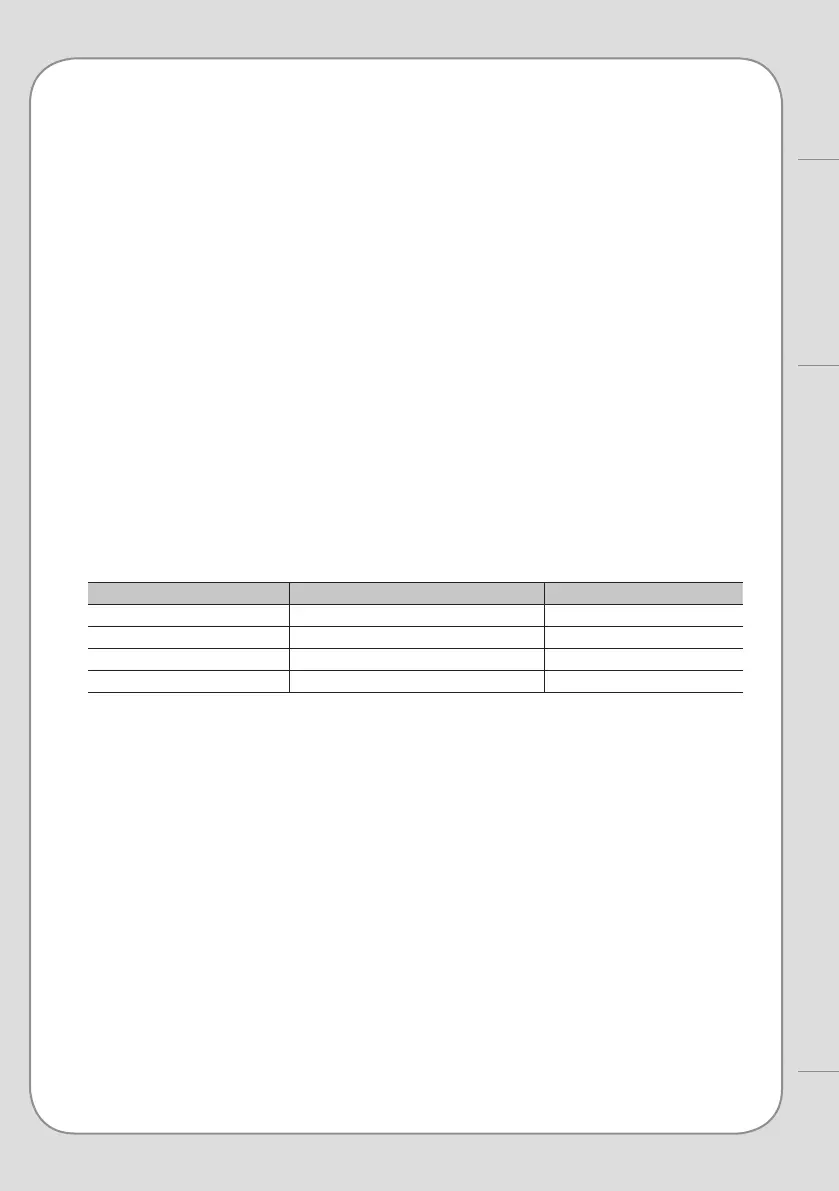34
33
PERFORMANCE DATA SHEET | CHP-7310R
Others
• Do not use with water that is microbiologically unsafe or of unknown quality without adequate disinfection before or
after the system.
• The estimated replacement time of lter, which is a consumable part, is not an indication of quality guarantee period, but
it means the ideal time of lter replacement. Accordingly, the estimated time of lter replacement may be shortened in
case it is used in an area of poor water quality.
• The ltration device installation shall comply with applicable state and local regulations.
• The reverse osmosis system contains a replaceable treatment component, critical for the eective reduction of total
dissolved solids and that product water shall be tested periodically to verify that the system is performing properly
• The inuent water to the system shall include the following characteristics:
o No organic solvents
o Chlorine: < 2 ppm
o pH: 7 - 8
o Temperature: 41 °F ~ 95 °F (5 °C ~ 35 °C)
o Iron: < 2 mg/L
o Turbidity: < 1 NTU
o Hardness: < 1 000 mg/L
• This system has been tested for the treatment of water containing pentavalent arsenic (also know as As(V), As(+5), or
arsenate) at concentrations of 0.050 mg/L or less. This system reduces pentavalent arsenic, but may not remove other
forms of arsenic. This system is to be used on water supplies containing a detectable free chlorine residual at the system
inlet or on water supplies that have been demonstrated to contain only pentavalent arsenic. Treatment with chloramines
(combined chlorine) is not sucient to ensure complete conversion of trivalent arsenic to pentavalent arsenic. Please see
the Arsenic Facts section of this Performance Data Sheet for further information.
• The compounds certied under NSF/ANSI 401 have been deemed as “incidental contaminants/emerging compounds”.
Incidental contaminants are those compounds that have been detected in drinking water supplies at trace levels. While
occurring at only trace levels, these compounds can aect the public acceptance/perception of drinking water quality.
• Refer to the owner’s manual for specic installation instructions, manufacturer’s limited warranty, user responsibility, and
parts and service availability.
• For parts and service availability, please contact your local dealer or Coway.
Model of Filter Type Usable period (months)
CNFN8S NEO-SENSE FILTER 6
CRMFN8S-20 RO MEMBRANE FILTER 20
CIFN8S-PLUS PLUS INNOSENSE FILTER 18
CAF-03 ANTIBACTERIAL FILTER 12
ARSENIC FACTS
Arsenic (abbreviated As) is found naturally in some well water. Arsenic in water has no color, taste or odor. It must be measured by
a lab test. Public water utilities must have their water tested for arsenic. You can get the results from your water utility. If you have
your own well, you can have the water tested. The local health department or the state environmental health agency can provide
a list of certied labs. The cost is typically $15 to $30. Information about arsenic in water can be found on the Internet at the US
Environmental Protection Agency website:
www.epa.gov/safewater/arsenic.html
There are two forms of arsenic: pentavalent arsenic (also called As(V), As(+5), and arsenate) and trivalent arsenic (also called As(III),
As(+3), and arsenite). In well water, arsenic may be pentavalent, trivalent, or a combination of both. Special sampling procedures
are needed for a lab to determine what type and how much of each type of arsenic is in the water. Check with the labs in your area
to see if they can provide this type of service.
Reverse osmosis (RO) water treatment systems do not remove trivalent arsenic from water very well. RO systems are very eective
at removing pentavalent arsenic. A free chlorine residual will rapidly convert trivalent arsenic to pentavalent arsenic. Other water
treatment chemicals such as ozone and potassium permanganate will also change trivalent arsenic to pentavalent arsenic. A
combined chlorine residual (also called chloramine) may not convert all the trivalent arsenic. If you get your water from a public
water utility, contact the utility to nd out if free chlorine or combined chlorine is used in the water system.
The CHP-7310R system is designed to remove pentavalent arsenic. It will not convert trivalent arsenic to pentavalent arsenic. The
system was tested in a lab. Under those conditions, the system reduced 0.050 mg/L pentavalent arsenic to 0.010 mg/L (ppm) (the
USEPA standard for drinking water) or less. The performance of the system may be dierent at your installation. Have the treated
water tested for arsenic to check if the system is working properly. The RO component of the CHP-7310R system must be replaced
every 20 months to ensure the system will continue to remove pentavalent arsenic. The component identication and locations
where you can purchase the component are listed in the installation/operation manual.
